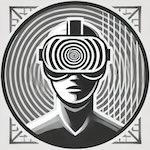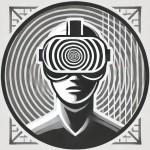
Half-day tutorial at ISMAR 2024 on
“Cybersickness: Understanding the Challenge and Building Solutions with Standardized Benchmarks”
Join us for an in-depth exploration of cybersickness, a persistent challenge in virtual reality (VR). In this tutorial, we’ll delve into the causes and effects of cybersickness, drawing on the latest research and theories. We’ll introduce you to a novel, open-source benchmark system designed to help standardize the assessment and mitigation of cybersickness, empowering you to evaluate VR experiences and test mitigation strategies. Through interactive workshops and hands-on demonstrations, you’ll gain the knowledge and tools to create more comfortable and immersive VR experiences. Whether you’re a researcher, developer, or content creator, this tutorial will equip you to tackle cybersickness head-on and contribute to the advancement of VR technology.
 This half-day tutorial will provide a comprehensive overview of cybersickness in virtual reality (VR). It will cover the definition, symptoms, and impact of cybersickness, as well as the leading theories and factors that influence it. The tutorial will also introduce a novel, open-source cybersickness benchmark system designed to standardize the assessment and mitigation of cybersickness. Attendees will learn how to use the benchmark to evaluate VR experiences and mitigation techniques, and will have the opportunity to participate in an interactive workshop to discuss potential improvements and future directions for the benchmark.
This half-day tutorial will provide a comprehensive overview of cybersickness in virtual reality (VR). It will cover the definition, symptoms, and impact of cybersickness, as well as the leading theories and factors that influence it. The tutorial will also introduce a novel, open-source cybersickness benchmark system designed to standardize the assessment and mitigation of cybersickness. Attendees will learn how to use the benchmark to evaluate VR experiences and mitigation techniques, and will have the opportunity to participate in an interactive workshop to discuss potential improvements and future directions for the benchmark.
Date & time: Monday afternoon 13:30-17:30 (aka 1:30-5:30pm), 21 October 2024 at ISMAR 2024
Presentation mode: Hybrid
Location: Kirkland room, see ISMAR schedule
Join using this Zoom link or check on the ISMAR website (contact us if you don’t receive it).
This tutorial will be offered in a hybrid format, with both in-person and online attendance options. All participants will benefit from live-streamed lectures, demonstrations, and Q&A sessions. However, in-person attendees will have the exclusive opportunity to experience the Cybersickness Benchmark firsthand, gaining hands-on experience with the system and its data analysis tools. This immersive experience will provide a deeper understanding of the benchmark’s capabilities and its potential applications in cybersickness research and mitigation.
Motivation
Cybersickness is a significant challenge in the widespread adoption of VR technology. It can cause a range of unpleasant symptoms, including nausea, dizziness, and disorientation, which can negatively impact the user experience and limit the potential applications of VR. ISMAR attendees, including researchers, developers, and content creators, are directly impacted by cybersickness. This tutorial will provide them with the knowledge and tools to understand, measure, and mitigate cybersickness, ultimately improving the user experience and advancing the field of VR.
Tutorial organizers
- Bernhard E. Riecke, Simon Fraser University
- Behrang Keshavarz, KITE Research Institute (UHN) / Toronto Metropolitan University
- Rose Rouhani, Simon Fraser University
Thanks for additional help & support by Kenneth Karthik and Katharina Pöhlmann
Target Audience
This tutorial is targeted towards researchers, developers, content creators, and anyone interested in the assessment and mitigation of cybersickness in VR.
Draft outline of tutorial:
See below for a draft outline.
Part 1: Understanding and Measuring Cybersickness (1:30 - 3pm, 90 minutes)
Opening Session (Plenary) 1:30 - 1:45pm
- Welcome and Introductions
- Overview of Tutorial Agenda and Logistics
Introduction to Cybersickness
- What is Cybersickness? Learn about the definition, symptoms, and the impact of cybersickness on VR experiences.
- How Common is Cybersickness? Understand the prevalence of cybersickness and how individual differences can affect susceptibility.
Theories and Factors Influencing Cybersickness
- What Causes Cybersickness? Explore the leading theories, including sensory conflict, ecological theory, poison theory, and the reference frame hypothesis.
- What Makes Cybersickness Worse? Learn about the key factors that can exacerbate cybersickness, such as field of view, motion type, and individual differences.
Measuring and Quantifying Cybersickness
- How Do We Measure Cybersickness? Get an overview of existing questionnaires (e.g., SSQ, Fast Motion Sickness Scale) and physiological/behavioral measures (e.g., heart rate variability, postural sway).
- Why is Standardized Assessment Important? Understand the challenges and importance of using consistent measures to compare research findings.
- Can We Predict Cybersickness? Learn about the concept of predictive models for cybersickness and their potential applications.
Identifying Gaps and the Need for Standardized Benchmarks
- What Are the Limitations of Current Research? Discover the gaps in our understanding of cybersickness and the need for better tools.
- Why Do We Need Standardized Benchmarks? Understand the importance of having a reliable and reproducible way to induce and measure cybersickness.
- What is a Standardized Benchmark? Get an introduction to the concept and its potential to advance cybersickness research.
- How does the Cybersickness Benchmark look/feel like? Get a teaser of the Cybersickness Benchmark before you get to try it out during the break (from 3–3:30pm)
< 30min break, 3-3:30pm >
Part 2: A Novel Cybersickness Benchmark (3:30 - 4:30, 60 minutes)
Motivation and Design of the Benchmark
- Why Develop a New Benchmark? Learn about the rationale behind creating a new cybersickness benchmark system.
- How Was the Benchmark Designed? Discover the design process, including key decisions and lessons learned.
- What Makes This Benchmark Unique? Explore the unique features and advantages of the proposed benchmark.
Theoretical Foundations and Implementation
- What Theories Underpin the Benchmark? Delve into the theoretical foundations of the benchmark, such as the rollercoaster paradigm, visual cues, and figure-eight track design.
- How Does the Benchmark Work? Understand the implementation details, including speed changes, frequencies, and the use of naturalistic environments with strong optic flow.
Demo and Initial Findings
- Experience the Benchmark: Participate in a live demonstration of the benchmark, showcasing its functionality and user interface.
- What Did the Initial Studies Find? Learn about the key findings from the initial validation studies, highlighting the benchmark’s ability to reliably induce and measure cybersickness.
- How Can the Benchmark Be Used? Explore potential applications of the benchmark in research and development.
How to Use the Benchmark
- Get Started with the Benchmark: Follow a step-by-step guide on how to access and use the benchmark in Unity.
- Quick walk-through https://github.sfu.ca/ispace-lab/VRSickness_Benchmark
- Access the Open-Source Code: Learn how to access the code on GitHub and adapt it for your own research.
- see screen recordings for further details
- Analyze Your Data: Get a brief demonstration on how to analyze the data.
Part 3: What’s next: Interactive Workshop & Future Directions (ca 4:30 - 5:30, 60 minutes)
Interactive Workshop: Improving the Benchmark
- Share Your Ideas: Participate in a brainstorming session to suggest improvements or new features for the benchmark.
- Adapt the Benchmark: Discuss how the benchmark can be tailored to different VR scenarios and use cases.
- Voice Your Needs: Provide feedback on the needs of researchers and developers in the field of cybersickness mitigation.
Overview
In this interactive workshop, you’ll take an active role in shaping the future of the cybersickness benchmark. We’ll brainstorm new ideas, prioritize key topics, and collaborate in groups to explore potential improvements, adaptations, and research directions. Your insights and contributions will directly impact the ongoing development and refinement of this valuable tool for the VR community.
Setting the Stage (5 minutes)
We’ll kick off Part 3 with a brief recap of the key takeaways from Parts 1 and 2, setting the context for our interactive workshop. We’ll then introduce the goals of this session and how we’ll be using Miro and Google Docs to facilitate collaboration and brainstorming.
Brainstorming New Topics (10 minutes)
Get ready to share your ideas! We’ll use Miro to brainstorm new topics and research questions related to the cybersickness benchmark. To spark your thinking, consider these prompts:
- What are the biggest challenges YOU face in VR projects related to cybersickness?
- What features or functionalities are missing from the benchmark?
- What research questions could the benchmark help answer?
- How can we make the benchmark more accessible and user-friendly?
- How can we effectively incorporate active locomotion (walking, running, etc.) into the benchmark?
- How can the benchmark be adapted to better account for individual differences in susceptibility to cybersickness?
- How can we integrate physiological data (heart rate, skin conductance, etc.) into the benchmark for a more comprehensive assessment?
- Can we develop predictive models using the benchmark data to anticipate cybersickness onset?
- How can the benchmark be tailored to specific VR scenarios (e.g., gaming, training, simulations)?
- Beyond cybersickness, how can the benchmark be used to assess and optimize the overall user experience in VR?
Topic Selection and Voting (5 minutes)
From the pool of brainstormed ideas and pre-selected topics, we’ll use Miro’s voting feature (or a good old-fashioned show of hands) to prioritize the most popular ones. Then, you’ll get to choose which breakout group you’d like to join based on your interests.
Breakout Groups (20 minutes)
It’s time to collaborate! We’ll divide into smaller groups (both in-person and online) to delve deeper into the chosen topics. Each group will have a dedicated facilitator to guide the discussion and ensure everyone has a chance to contribute. We’ll use Miro and Google Docs to capture key insights and recommendations.
Breakout Group Reports (10 minutes)
Each group will share a summary of their key findings and recommendations with the larger audience. Get ready to hear diverse perspectives and innovative ideas for the future of the cybersickness benchmark.
Wrap-up, Next Steps, and Q&A (10 minutes)
- Key Takeaways: Review the most important lessons and insights from the tutorial.
- Ask Your Questions: Get answers to your questions about cybersickness and the benchmark
- Join the Community: Learn how to get involved in the ongoing development and refinement of cybersickness benchmarks and potential research collaborations.